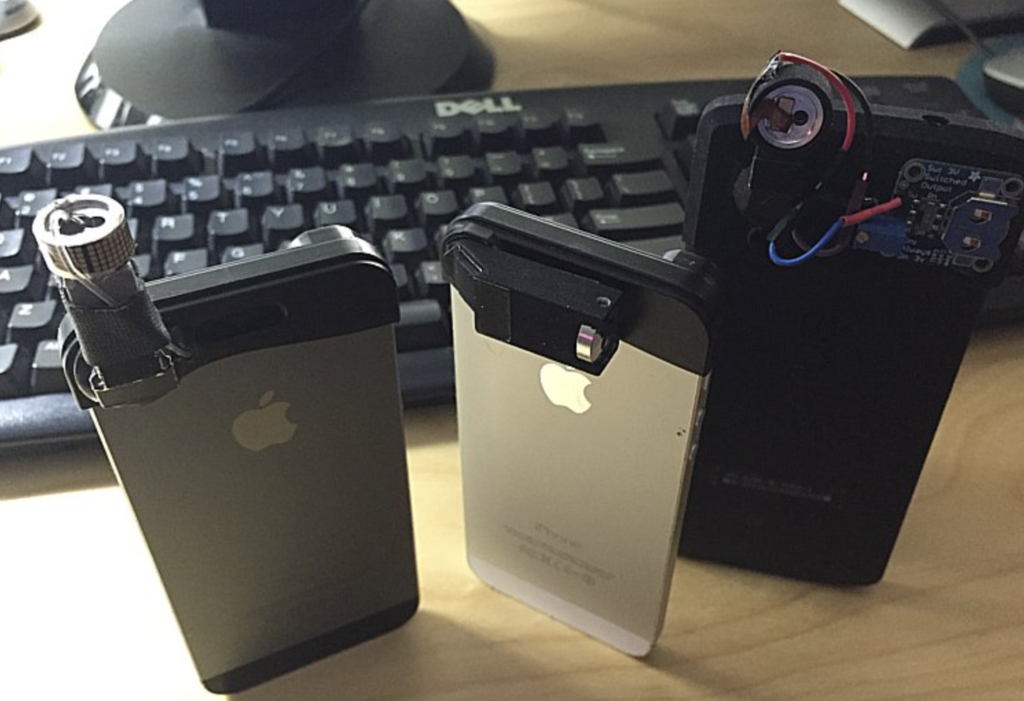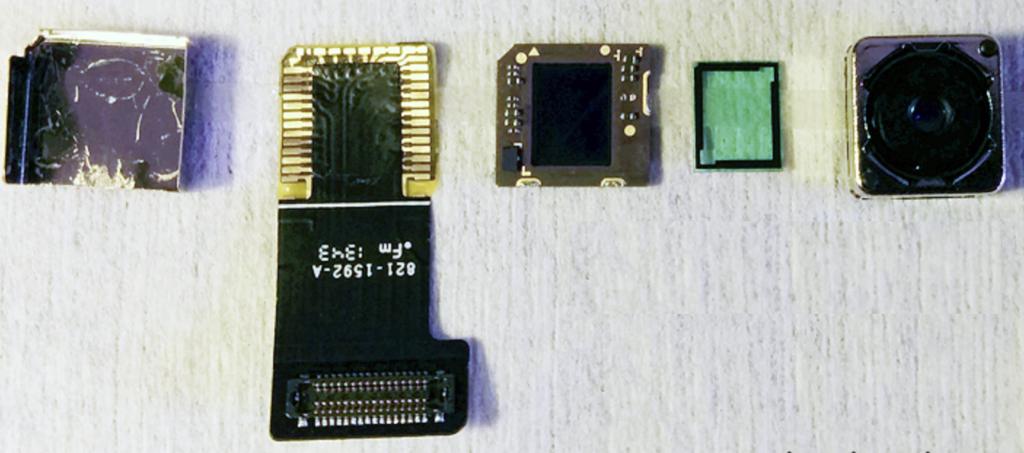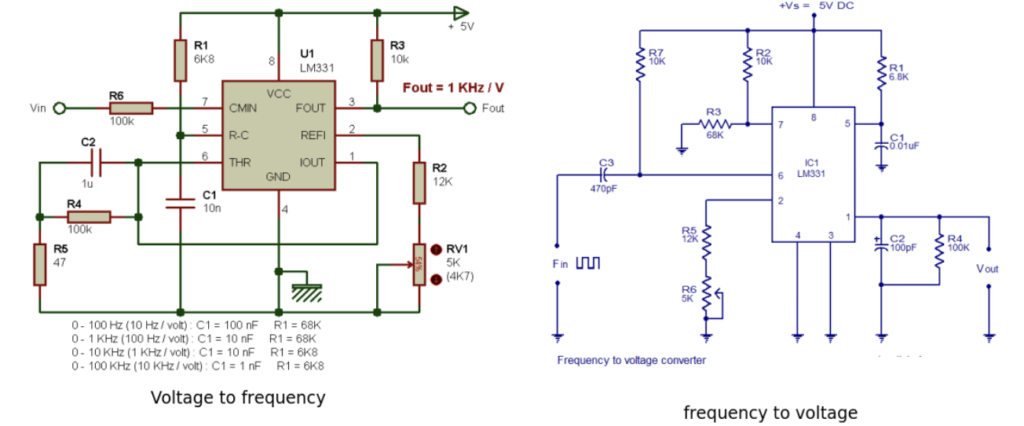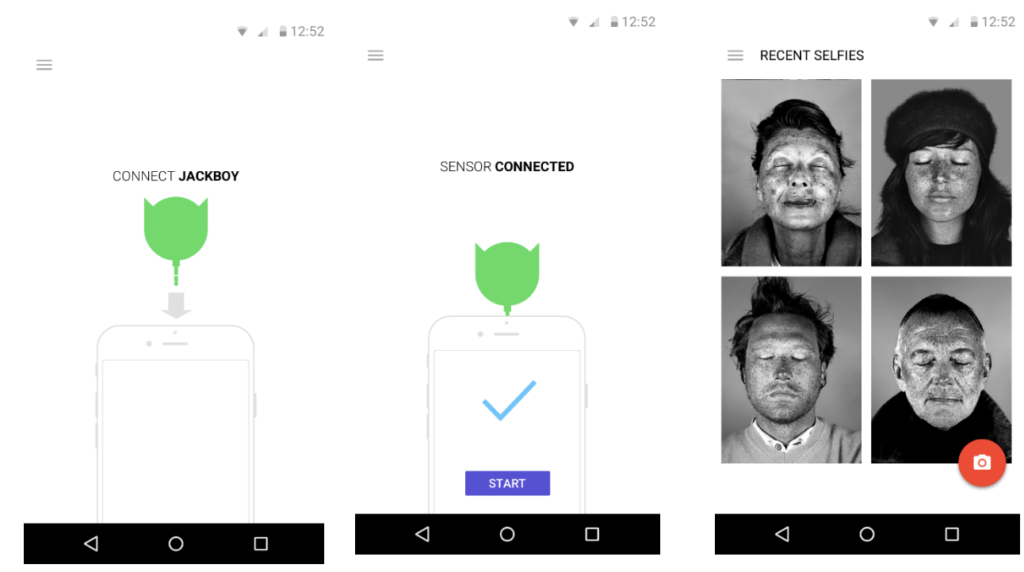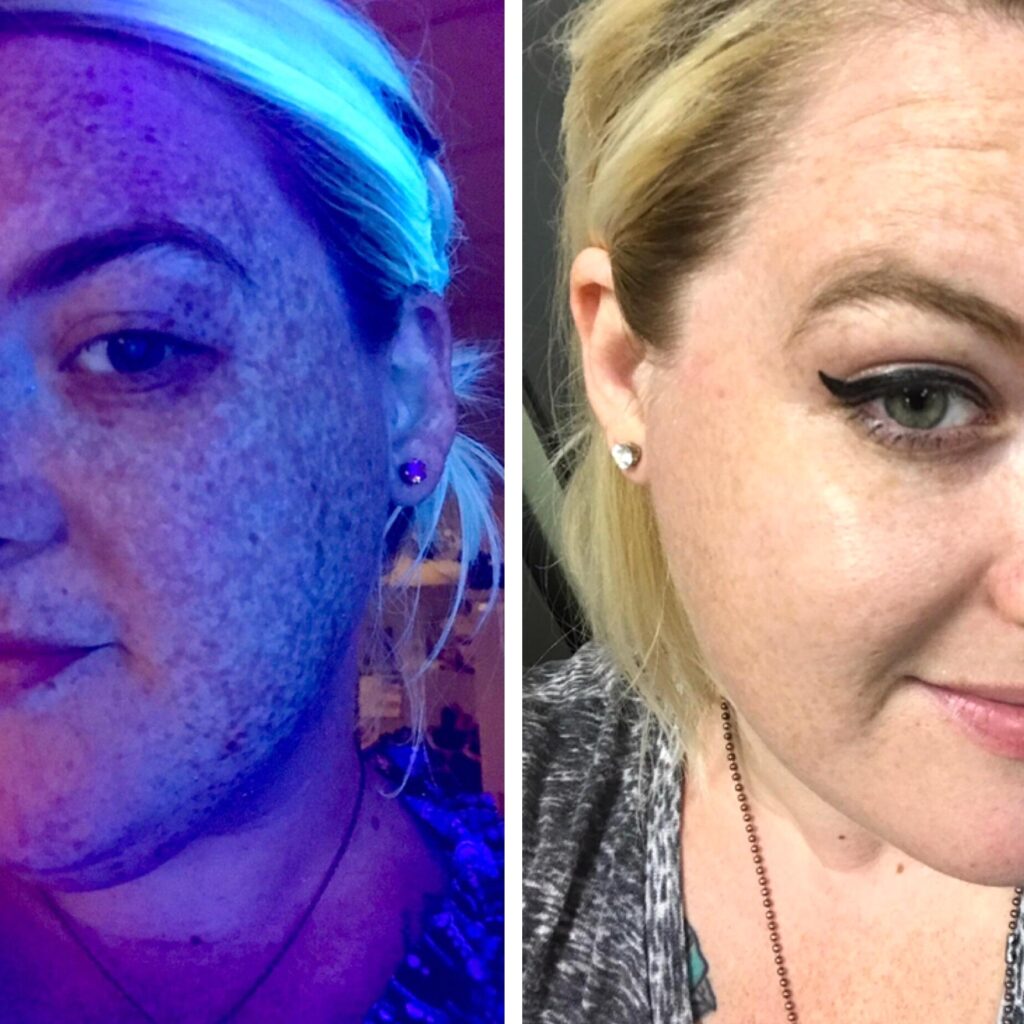
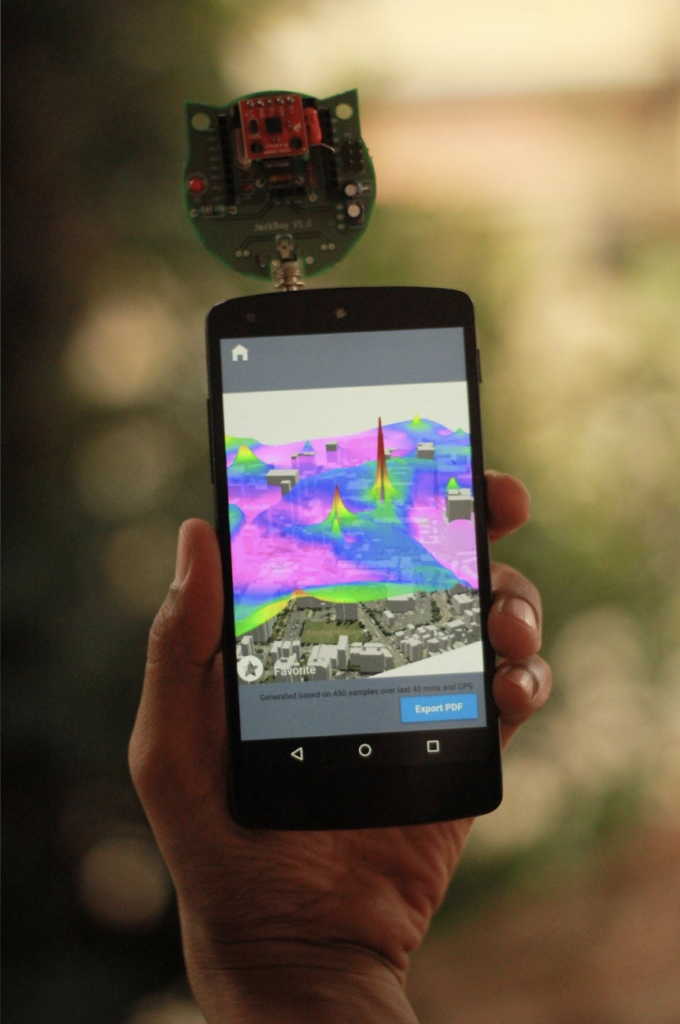
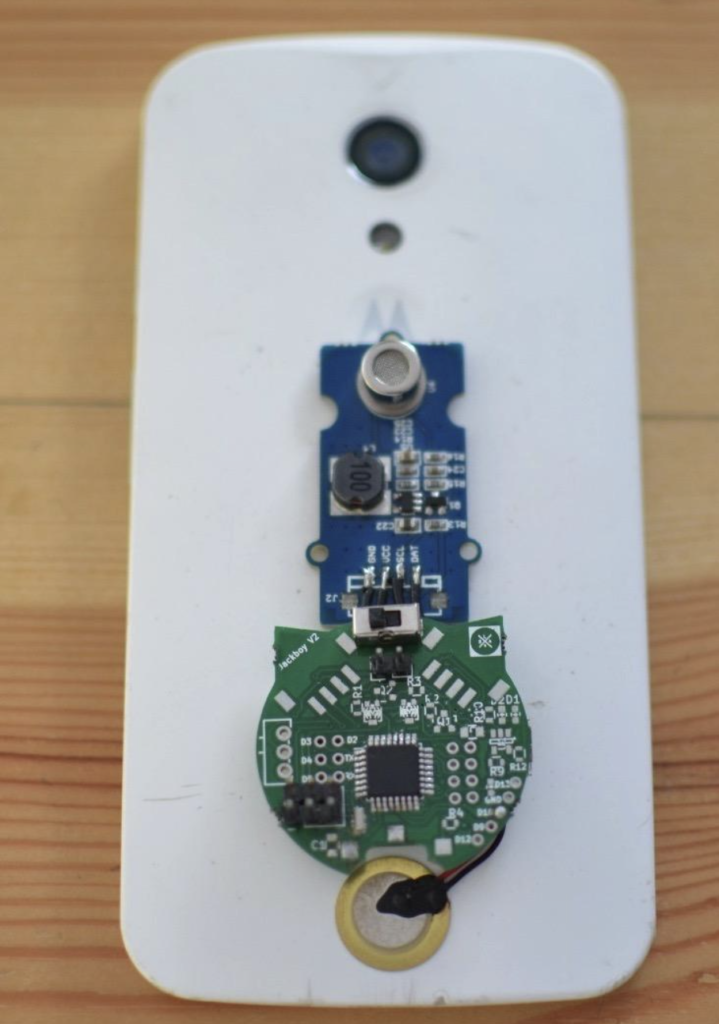
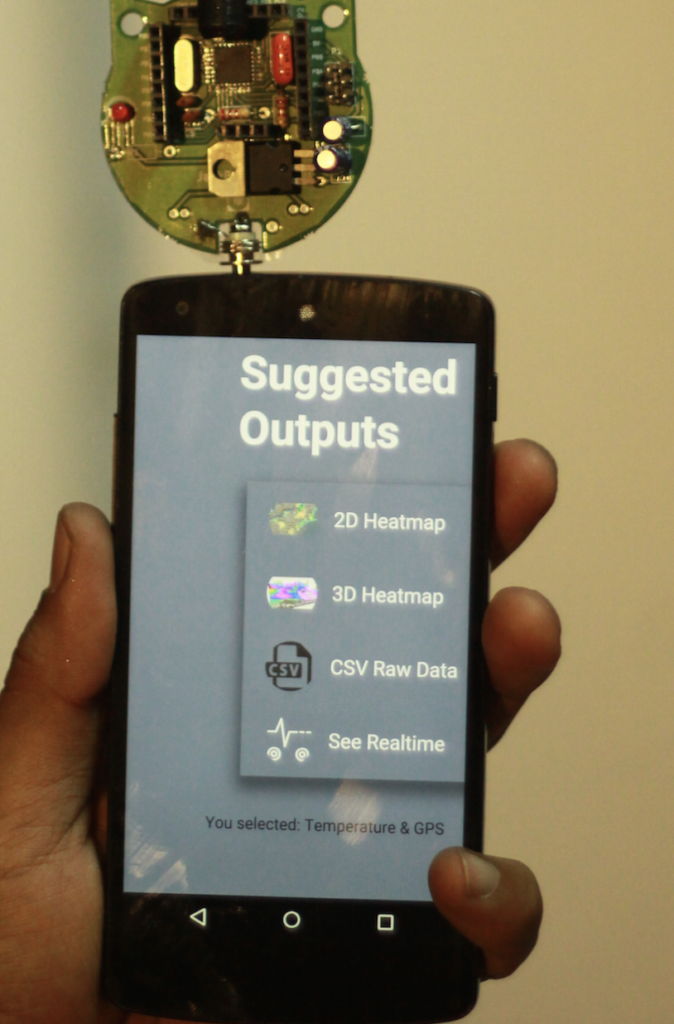

Collaborators: MIT Media Lab (Camera Culture), AHLab Singapore, Prof. Suranga Nanayakkara, Nitesh Kadyan. Supported by Sharat Satyanarayana, Nikhil Thard, 80Edifice
Apart from the access to the built-in set of sensors (GPS, camera, microphone, etc.), Jackboy gives an opportunity to add more sensors to Smartphones as and when required and utilized by research labs, expert users, or the maker community. Our low-cost, plug-and-play, by encoding sensor data into audio jack or microphone readable signals on phones, computers, cameras, or anything supporting 3.5 mm Audio Jacks (later evolved to generic microphones).
Jackboy will turn a smartphone into a powerful ‘magnifying glass’ enabling the users to probe the invisible real-world characteristics.
via a) Smartphone Spectrometry b) Consumer sensors c) Actuators/Lights(UV/IR)
e.g.
- “Connecting Geiger counter to the Jackboy will give a geotagged map of potential nuclear radiation hazard while you drive”
- “You can walk out with UV-Jackboy and be alerted for potential skin-cancer hazard” ‘Interfacing Jackboy with a NIR spectrometer will convert your phone into an on-the-go spectrometric fingerprinting device for food items letting the user find out whether the food item is edible or not’
We built the Jackboy on an analogy similar to a multipurpose screwdriver, the affordance of a plug-and-play device, with a modular framework to interface with different sensors through 3.5 mm Audio Jack route.
